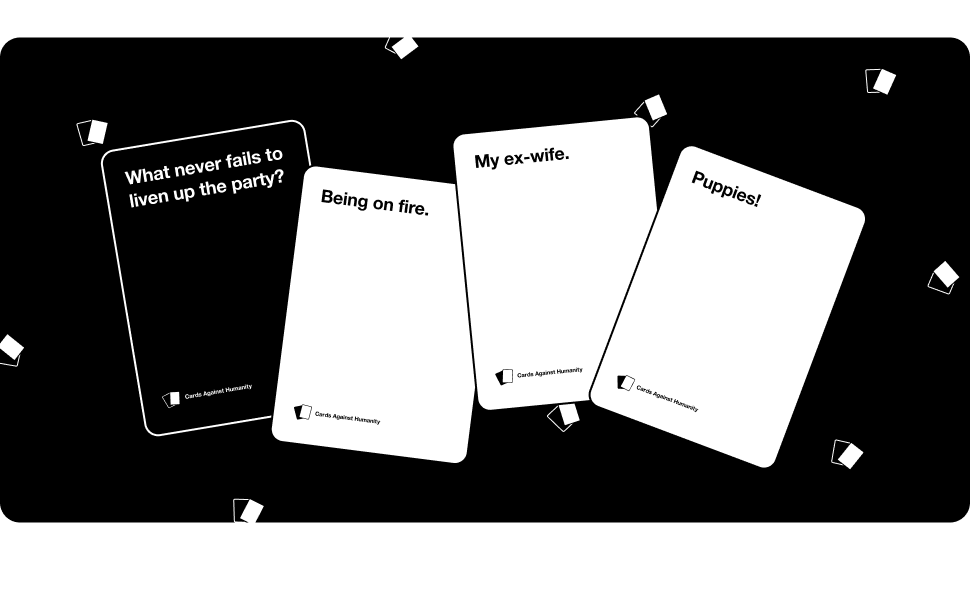Title: Cards Against Humanity
Creators: Josh Dillon, Daniel Dranove, Eli Halpern, Ben Hantoot, David Munk, David Pinsof, and Max Temkin
Platform: Physical card game
Target Audience: Cards Against Humanity is aimed at adults (17 years and older), with a target audience that appreciates dark humor and edgy content. The game’s messaging and marketing often emphasize its inappropriate nature, which attracts those who enjoy pushing boundaries and engaging in politically incorrect humor.
Formal Elements of the Game: Cards Against Humanity is a party game designed for 4 or more players, although it can be played with fewer. The game consists of black cards with fill-in-the-blank statements and white cards with phrases that can be used to fill in the blanks. Each round, one player becomes the Card Czar, who selects a black card and reads it aloud. Other players then select one of their white cards to complete the statement. The Card Czar picks the funniest or most fitting response, and the player who submitted it earns a point. The game does not have a specific end goal or objective; players can decide to play until a certain score or for a set amount of time. Cards Against Humanity encourages social interaction and promotes creativity and humor through its gameplay.
Kind of Fun: The game is fun and compelling because it allows players to express their sense of humor in an unrestricted environment. Players can explore the limits of their creativity and wit by coming up with unexpected combinations of cards. The game also fosters socialization, as players laugh together and enjoy the humorous situations the cards create.
Why the Game Works and How It Could Be Improved: Cards Against Humanity works because it taps into a desire for irreverent, inappropriate humor that many adults enjoy. The game’s simplicity and open-ended nature make it easy for players to pick up and play. However, some may argue that the game relies too heavily on shock value and offensive content, which could limit its appeal over time. To improve the game, the creators could introduce more expansions with a wider variety of themes, including less offensive content, to maintain interest and make the game more accessible to a broader audience.
Comparison to Other Games in Its Genre: Cards Against Humanity is often compared to games like Apples to Apples, which shares a similar gameplay structure. The main differentiating factor is the adult-oriented and controversial content of Cards Against Humanity, which sets it apart from more family-friendly alternatives. This makes the game more appealing to those who enjoy dark humor but can also limit its audience.
Vulnerability: Players may feel vulnerable while playing Cards Against Humanity, as the game can reveal aspects of one’s sense of humor that may be considered offensive or controversial. The game encourages players to be open and honest about their comedic preferences, which can lead to bonding or disagreement among the group.
Improvements on the Game: As mentioned earlier, the game could be improved by introducing more expansions with a wider variety of themes, including less offensive content. Additionally, incorporating new game mechanics or challenges, such as limited time for card selection or themed rounds, could add more variety to the gameplay.
Critiques Revealing Flaws in the Game: Cards Against Humanity has faced criticism for its reliance on offensive humor and shock value, which some argue can perpetuate harmful stereotypes or promote insensitivity. Furthermore, the game’s simplistic structure and repetitive nature may cause it to lose its appeal after multiple plays, as players become more familiar with the card combinations.




